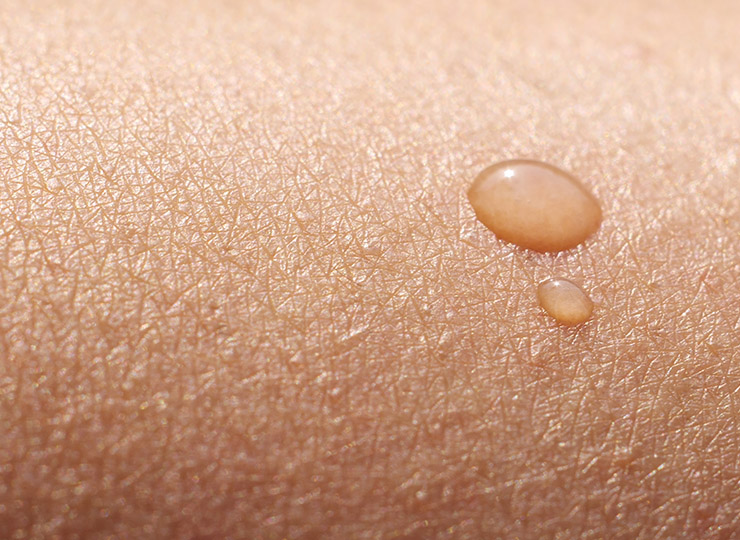What is the Skin Microbiome?


Few of us remember much we learned in high school biology, but you don’t have to be a trained scientist to understand the basics of your skin’s biology. Your skin is the largest organ in your body, but it incorporates millions of cells, hair follicles, glands, and microorganisms that all work together to support a healthy environment. In fact, there’s an invisible ecosystem living on your skin and keeping that ecosystem in balance is the key to keeping your skin healthy.
We’re talking about your skin microbiome. You may not like the thought of microorganisms living on and in your skin, but the microbiome is a system that has evolved over thousands of years and your skin wouldn’t’ be the same without it. Here’s what you need to know about your skin microbiome.
What is the Microbiome?
You may think of the human body as a conglomeration of cells, tissues, bones, and organs when it is actually so much more complicated than that. The human body consists of eleven organ systems, each of which contains specific organs made up of groups of tissues that work together to perform specific functions. Scientists estimate there are somewhere over 30 trillion cells in the human body, and they all work in harmony to carry out the basic functions essential for survival.
The microbiome is different from these organ systems in that it is made up of separate microorganisms. Your skin is actually home to billions of friendly microorganisms – sometimes referred to as skin flora – which exist in an invisible ecosystem on your skin.
Here are some of the essential roles your skin microbiome plays:
- Managing your skin’s pH level
- Producing skin nutrients and essential lipids
- Maintaining the skin’s protective barrier
- Supports the immune system against pathogens
These are the benefits of a healthy skin microbiome but if the microbiome becomes unbalanced, it can cause negative effects. Research suggests microbiome involvement in a variety of skin conditions like eczema and atopic dermatitis, even acne and skin sensitivity.
How Are the Skin and Gut Connected?
You’ve probably experienced for yourself the way you skin and gut are connected. When you don’t eat well, the consequences appear on your skin in the form of increased oil production or nasty breakouts. But what role does the gut really plan in skin health and vice versa?
The term gut is usually used to refer to the gastrointestinal tract and it includes everything that runs between your mouth and anus – basically, the path food follows through your body. The gut is where food is broken down and nutrients are processed then divvied off throughout the body via the bloodstream. Like your skin, the gut houses its own host of microorganisms. The National Institutes of Health (NIH) Human Microbiome Project revealed that the microorganisms in the body outnumber human cells 10 to 1, and the largest number of microbes live in the large and small intestine.
Microorganisms in the gut exist to aid digestion, boost the immune system, break down toxic compounds, and synthesize key nutrients and amino acids. A healthy gut is all about maintaining balance between good bacteria and bad. If the bad bacteria start to overwhelm the good, it may lead to negative effects, some of which impact the skin.
Though researchers have determined that there is a relationship between gut and skin health, the concept of the “Gut-Skin Axis” is still not fully understood. Additional research is required, but there seems to be a connection between the health of the digestive microbiome and the health of the skin microbiome. It’s safe to assume, then, that improving one may have beneficial effects for the other.
Tips for Taking Care of Your Microbiome
Though there are certain aspects of your skin microbiome you can’t control – things like genetics – there are simple steps you can take to support healthy balance.
Choose a gentle cleanser appropriate for your skin type and avoid harsh products that might kill off beneficial bacteria or irritate your skin. Opt for natural fibers like cotton over synthetics and keep your body healthy and hydrated with a balanced diet and plenty of water. You may also want to check out Yon-Ka’s products that contain probiotics to help support optimal balance for your skin microbiome.
These are the top two Yon-Ka products to support the skin’s microbiome:
- Sensitive Crème – Specifically formulated for sensitive and reactive skin, this nourishing moisturizer features the Sensibiotic Complex that calms and comforts the skin with pre and probiotics and sea mayweed extract. Enriched with shea butter to nourish, this cream desensitizes the skin while balancing microflora and strengthening the skin’s protective barrier.
- Nutri Defense – An age-defense moisturizer for dry, very dry, or stripped skin, this replenishing cream is enriched with omega essential fatty acids for intense comfort and repair. Made with the same pre- and probiotics along with nourishing oils, this formula provides intense nutrition while boosting the skin’s natural defenses.
Though these two products may look similar at first, they serve two very different functions. Sensitive Crème contains 6 times the pre- and probiotics of Nutri Defense. This formula is designed to address sensitivity and calm irritation while boosting the skin’s microflora to improve resilience. Nutri Defense is ideal for rebalancing dry skin and boosting the skin’s defenses.
If you’re not sure whether Sensitive Crème or Nutri Defense is the right product for you, stop in to your local Yon-Ka Spa for a consultation and product recommendations. Your local Yon-Ka Paris professional can also help you customize your daily skincare routine to support your skin microbiome.
The post What is the Skin Microbiome? appeared first on Yon-Ka Paris.
from Yon-Ka Paris https://ift.tt/3l1JDQX


Comments
Post a Comment